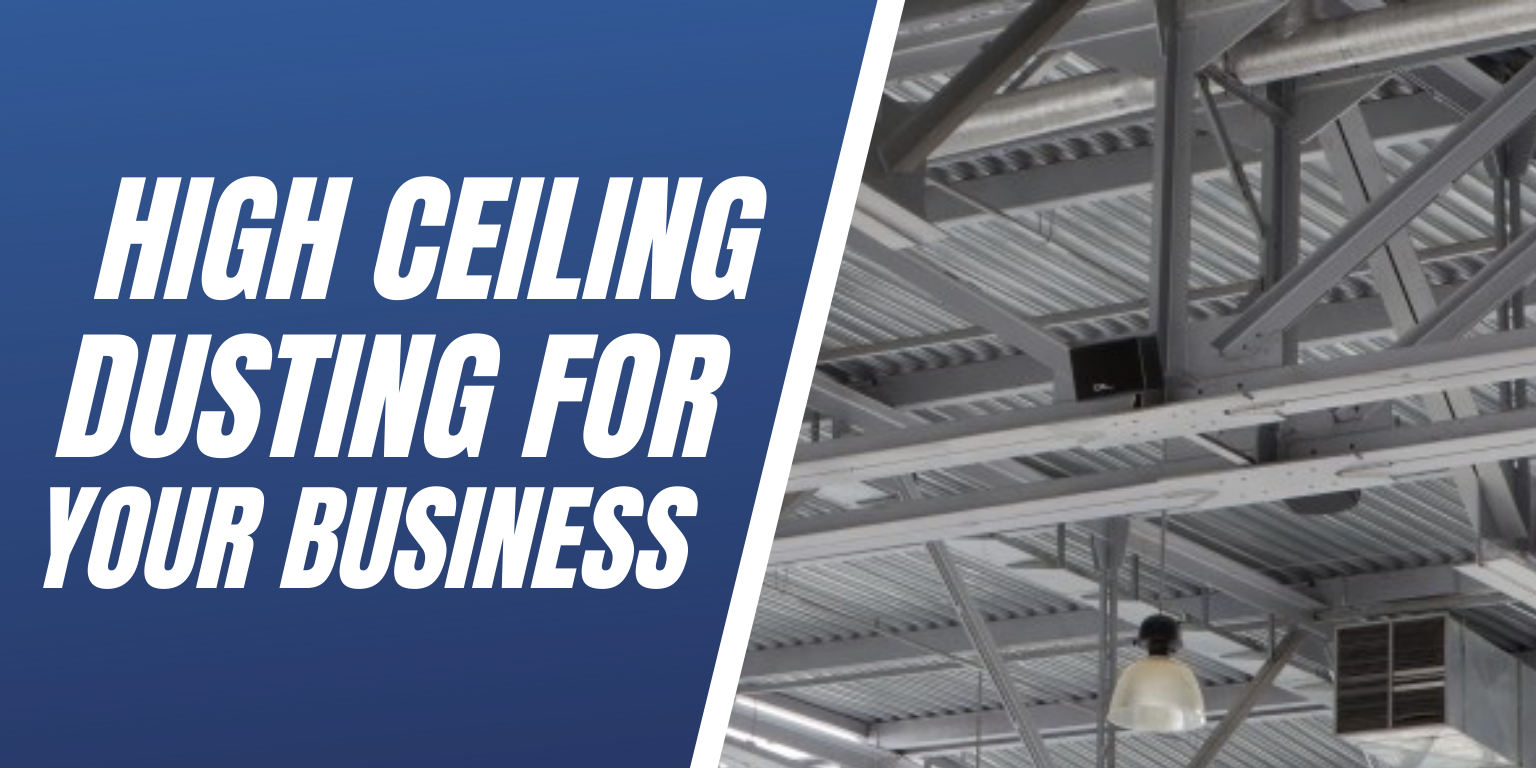
With the winter season right around the corner, I can’t help but think about the importance of a clean work environment during these months. Snow, ice and cold weather aren’t the only hazards that are present during these months. As an industrial facility, dust created from the manufacturing process begins to accumulate on the surfaces of machinery, ceiling rafters, floor and even in the ductwork. Unfortunately, many facilities don’t think about high surface cleaning and only focus on the areas that are visible. And although it may seem like the ceiling dust isn’t hurting anything, in reality it is causing numerous problems within the building. So, why should you make high ceiling dusting for your business a priority this winter?
Debris Falling / Quality Control Issues
Dust on the floor is a sign that there is dust elsewhere in the building, including high up and out-of-sight areas. When the dust from high surfaces, such as rafters and pipes is disturbed from vibrations and/or air movement, it can fall down onto machinery and production equipment. This can cause numerous quality control problems and even damage the machinery.
Less Efficient HVAC System
Typically, the dust you can actually see with the naked eye only accounts for ten percent of the total amount of dust in the air. These smaller particles can stay suspended in the air, and over time are brought into the ventilation system as air flows through the building. This dust will settle in sections of the duct where there is a bend or anything that might prevent the dust from continuing to flow through, clogging the HVAC and making it work harder to move air throughout the building.
Employee Health Risks
Not only do dirty ductwork cause the HVAC system to run less efficiently, but they are the perfect breeding ground for mites, mold, bacteria, viruses, and other poisons that could contribute to Sick Building Syndrome. Mites and mold can cause allergic reactions in some people; bacteria and viruses will spread throughout the building making your employees sick.
Dust can also be a slipping hazard when it collects on walking surfaces; the small particles reduce the traction that people are used to when walking in a building. Slips are one of the main causes of workplace injury, and within those injuries dust is one of the main causes of those slips.
Combustible Dust Explosion
As an industrial facility, you produce a lot of dust, and over time that dust collects on machinery, floors, and on high surfaces. Unfortunately, many facilities only think about cleaning areas that are visible and certain types of dusts can pose a fire hazard when they collect in large enough areas. Many secondary explosions in factories have been caused by an explosive dust cloud forming when dust is knocked down from these high surfaces.
Many types of dust become explosive under the right conditions, and there have been numerous cases of uncleaned dust coming into contact with an ignition source and exploding. The dust explosion pentagon has been created to explain how these explosions form and how to prevent them, and OSHA and the NFPA have been developing new codes to help combat this issue.
OSHA Fines
OSHA has been paying attention to the dangers that dust in the workplace can create and has been cracking down on companies that aren’t following housekeeping rules. The Combustible Dust National Emphasis Program was created by OSHA to deal with this issue, and has already cited almost five thousand businesses for dust accumulations, with fines ranging from thousands of dollars to hundreds of thousands.
High ceiling dusting will help remove dust, dirt, grease, and other materials commonly found on the high surfaces of manufacturing and production facilities. Think your building needs high ceiling dusting this winter. Contact Us Here or call us at 888-845-3952 to find out how Hughes Environmental can help get rid of the dust in your business.

